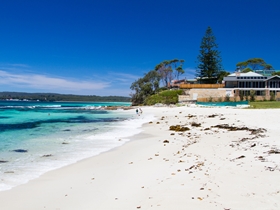
The risks of not using Stainless Steel in Marine Environments are fairly obvious; however due to the number of enquiries we receive for replacement brackets in existing construction, stainless steel is not used as often as it should be in these locations!
Under the Australian Standards there are guidelines around where Stainless Steel Fixings and Brackets should be used. AS3700 Section 5 outlines the requirements for usage of stainless steel and in marine and freshwater wetting and drying environments.
VUETRADE have released a new Specification Chart which outlines the areas in coastal locations and the grade steel that should be used in these areas. We also implemented a new set of Icons in conjunction with this to make it even easier for you to identify the correct product for the application.
We note that the NCC (National Construction Code) issues no guidelines for Stainless Steel usage in coastal areas. However the Australian Standards does, and the implications of not using Stainless Steel are clear.
Take a look at our Stainless Steel Area Usage Guide Chart… you will find it on our VUETRADE Specification Guides Page
Share on Facebook
Share on LinkedIn
Share on Twitter
Share on Google+